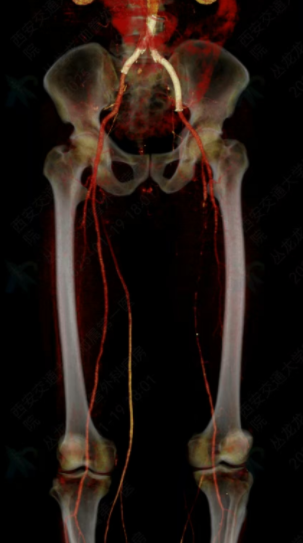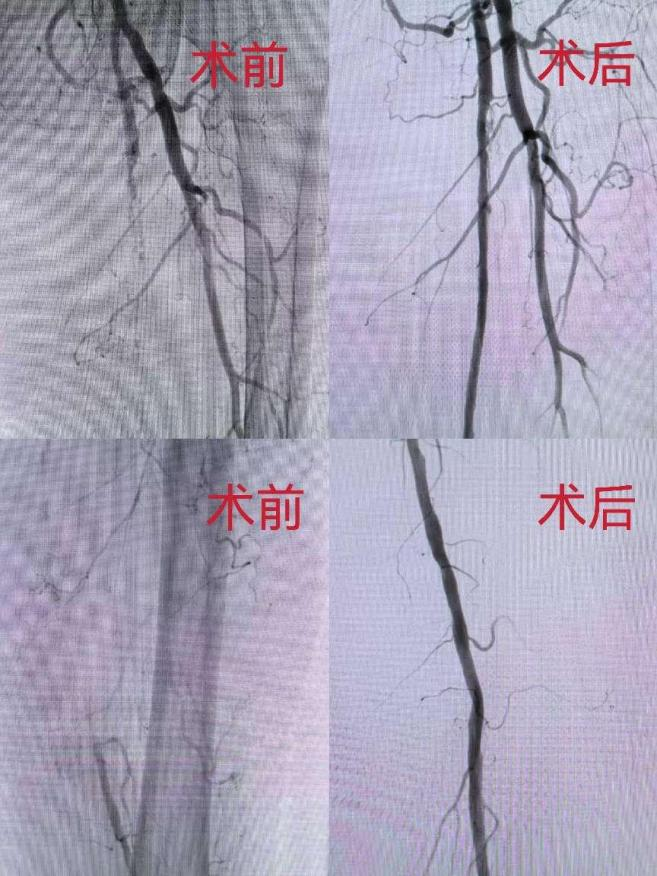Recently, Department of Vascular Surgery of Land Port Division of the First Affiliated Hospital (FAH) of Xi’an Jiaotong University (XJTU) successfully completed the first case of transbrachial Jetstream atherectomy for arteriosclerosis obliterans of the lower limbs in northwest China.
A 61-year-old male patient had medical history of occlusion of the main iliac artery (receiving stenting treatment) and arteriosclerosis obliterans of the left lower limb. Preoperative angiography showed that the stents in the lower abdominal aorta and bilateral iliac arteries were patent, whereas the kissing stents located in the middle and lower abdominal aorta and the initial segment of superficial left femoral artery were severely narrowed complicated with long-segmental occlusion.

The patient had previously undergone abdominal aorta-iliac artery kissing stent implantation. In addition, the lesions were complex, and it was inappropriate to perform open surgery or hybrid surgery. After comprehensive consultation and evaluation, the team of Chief Physician Yang Lin, Professor Lu Shaoying and Professor Liu Jianlin decided to adopt the latest procedure of Jetstream atherectomy for arteriosclerosis obliterans of the lower limbs.
The patient's brachial artery was punctured under local anesthesia, and the sheath was successfully inserted through the stents of the original abdominal aorta and iliac artery to reach the lesion site. After placing an umbrella device, the latest procedure of Jetstream atherectomy was performed. With intimate cooperation with Department of Anesthesiology and Perioperative Medicine, Chief Physician Yang Lin removed the thrombi and plaques in the lower extremity arteries, applied a drug-coated balloon to the diseased segment to prevent the recurrence of the lesions, resolved the problem of vascular occlusion and avoided metal stent implantation. Postoperatively, the patient could walk, and symptoms such as cold and pain in the lower limbs were significantly relieved. He was discharged the next day after recovery.

At present, this novel procedure is widely recognized as the most advanced treatment for peripheral arterial diseases worldwide, which can remove plaques and thrombi that cause vascular occlusion, and combine with drug-coated balloons to increase patency rate, reduce stent use and lower medical expenses. In addition, this procedure is performed via the brachial artery route, and patients can walk immediately after the surgery, which resolves the limitation of conventional surgery through the femoral artery route requiring postoperative 24-h bed rest prior to walking. This procedure accelerates postoperative recovery and significantly shortens the time of postoperative bed rest and hospital stay.